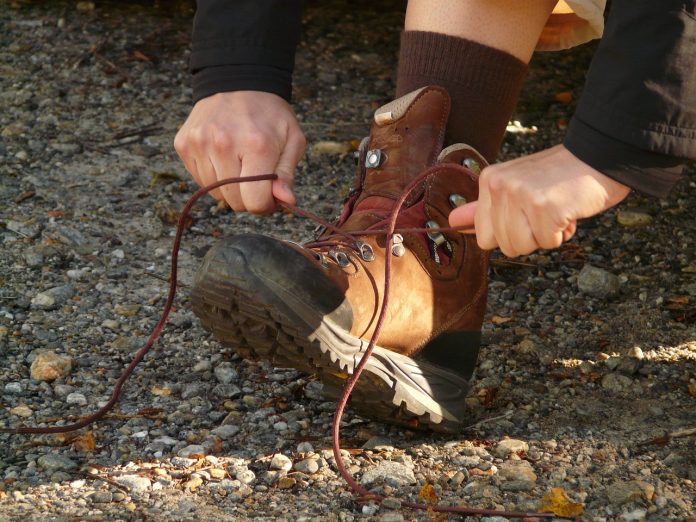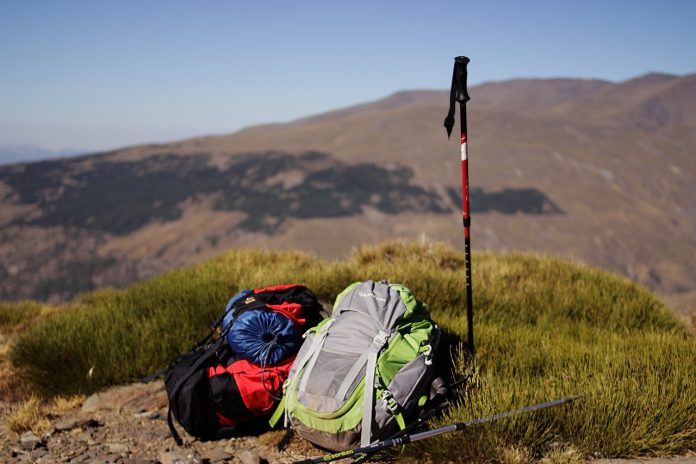Having properly fitted, durable, and comfortable hiking shoes are essential gear for protecting your feet and ankles while logging miles on the trail. With so many hiking shoe options available, it can be challenging to select the right pair suited to your specific needs. This guide will walk you through the key factors to consider including shoe types, fit, size, performance features, and terrain suitability. Follow these tips to pick the perfect hiking shoes.
Table of Contents
You may also want to know: How to start hiking
Hiking Shoe Types and Styles
Hiking shoes fall into three main categories, each with its pros and cons:
Trail Shoes – Also called trail runners, these lace-up shoes have light, flexible uppers, faster-drying mesh, and a low-cut design. Trail shoes excel on groomed trails and day hikes carrying lighter loads at low elevation. They are more breathable but provide less ankle support and weather protection than boots.
Hiking Boots – These sturdier boots extend up the ankle or higher to provide more stability and ankle support on uneven ground. They offer enhanced toe protection. Boots have stiffer midsoles that limit natural foot flexion but aid in descents. Waterproof models are available. Boots carry heavier loads over long distances. However, they break in slowly, and the weight tires feet.
Approach Shoes – With the feel of athletic shoes but the traction of light hikers, approach shoes are ideal for easy trails, walking on pavement, and casual wear. Grippy rubber makes them ideal for scrambling on rocks. The low cut allows good mobility. Not designed for carrying heavy loads over miles.
Consider when you will primarily wear the shoes, the types of terrain, mileage, and pack weight to guide your choice in these categories.
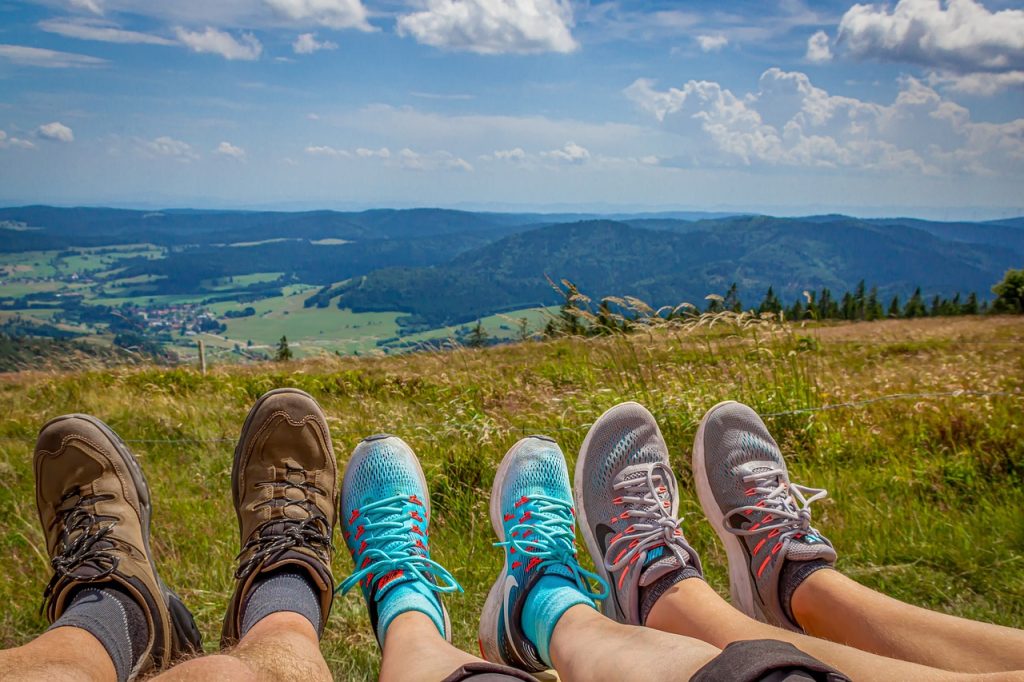
Key Features for Hiking Shoe Performance
Look for these performance features based on the trails you tackle and miles you log:
- Grippy outsole – Deep, widely spaced lugs with stickier rubber grip slippery dirt and rocks. Vibram is a top sole brand.
- Cushioning – More or denser EVA foam in the midsole absorbs shock on hard surfaces and downhill. Saves leg fatigue.
- Ankle support – Taller uppers or padded collars brace ankles on uneven ground. Prevents rolling.
- Stability – A stiff shank prevents the shoe from twisting. Useful for supporting packs.
- Waterproofing – Membranes like Gore-Tex keep feet dry through puddles and mud without trapping sweat.
- Toe protection – Durable toe caps prevent painful impacts with rocks and roots bulging from the trail.
The more rugged the trails, the more robust the outsole, cushioning, and stability features should be. But you’ll carry the added weight all day.
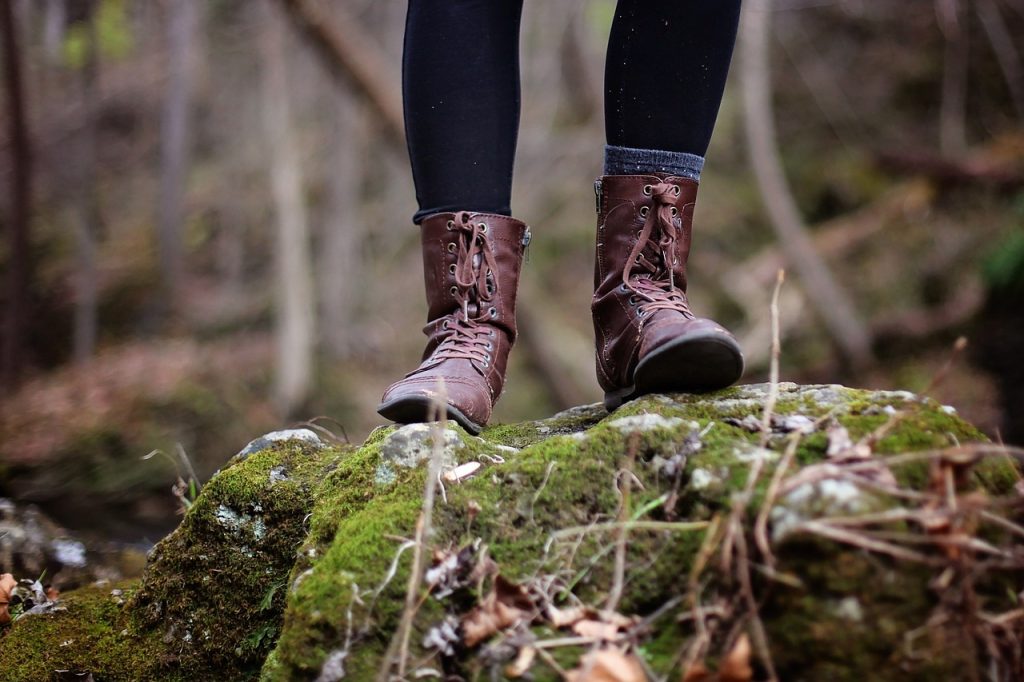
Considerations for Proper Fit
It’s essential to get the right hiking shoe size for comfort and to avoid problems like blisters. Follow this guidance:
- Go up 1⁄2 to 1 full size from your normal shoes to allow toe room when descending declines. Feet swell on long hikes.
- Width matters. The shoes should comfortably cradle your foot. Feet spread when carrying big loads.
- There should be just 1⁄4 to 1⁄2 inch space between your toes and the front when standing. Less cause nail problems. More allows sliding.
- Lace-up the shoes tightly. Your heel should not lift more than 1/8 inch when walking. Lock it in place.
- Shop for shoes at the end of the day when feet are slightly swollen. Bring the same socks you’ll hike in.
- Break shoes in before longer treks. Short neighborhood walks help mold to your feet.
Don’t expect leather hiking boots to stretch much. Purchase non-waterproof versions larger to accommodate thick wool socks in winter. Ensure growing kids size up their shoes regularly.
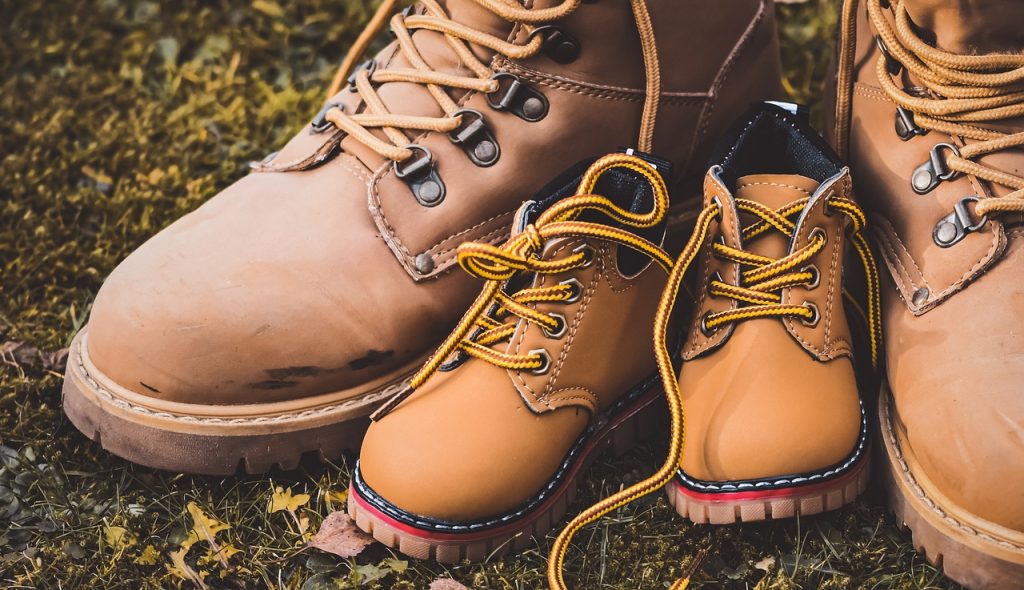
Different Types of Terrain and Conditions
Consider these common hiking locations and how to pick appropriate footwear:
Groomed Trails – On flat, non-technical terrain, flexible low-cut trail shoes provide breathability and freedom of movement. Look for models with targeted stability features if carrying light packs.
Rugged Trails – For uneven, rocky ground with occasional scrambling, opt for mid to high-cut lightweight hiking boots with extra cushioning and ankle support. Waterproofing helps keep feet dry.
Wet Trails – Prioritize shoes with enhanced waterproofing or quick drainage and ventilation like mesh panels when hiking in wet environments like marshes. Waterproof boots help prevent soggy feet.
Desert Hiking – The best shoes for desert and canyon terrain provide flexibility along with durable uppers to withstand abrasive sands. Focus on fit for comfort and blister avoidance.
Winter Hiking – Insulated, waterproof boots with aggressive grip work well in snow and slush. AVOID leather soles. Look for removable insoles to accommodate thick insulating socks.
Maximum comfort and preventing injuries should drive hiking shoe selection. Consider terrain variables like rocks, sand, snow, elevation, and water exposure to pick ideal footwear. Test shoes on shorter hikes first.
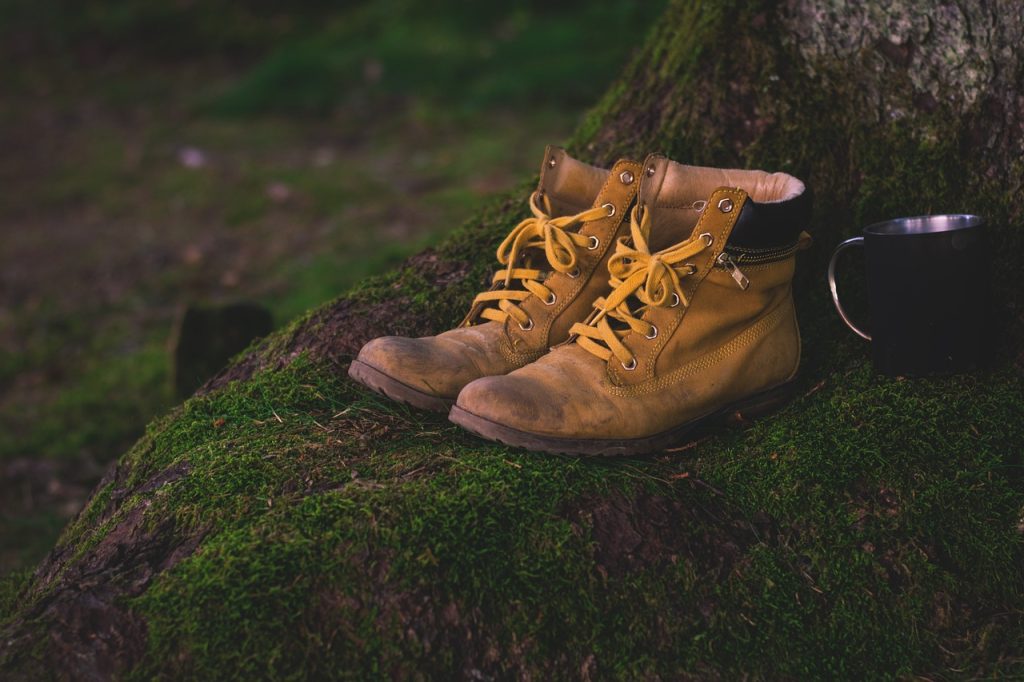
Getting Properly Sized
Follow this process when visiting a retailer to find your optimal hiking shoe size:
- Bring your current hiking shoes that have worked well if available. This gives the salesperson a baseline.
- Try shoes on at the end of the day when your feet are slightly swollen after being active.
- Wear the hiking socks you plan to wear, especially if thicker than everyday socks.
- Try both shoes on. Feet are often different sizes. Fit to the larger foot.
- Walk around the store with different sizes to assess the fit. Does your heel lift? Are your toes crammed?
- There should be enough room to wiggle toes, but shoes should hug feet snugly. Erring smaller is better.
- For boots, test different lacing tightness on the ankle to find the right flexibility and support.
- Consider custom insoles or orthotics if you have flat or high arches requiring support.
Listen to feedback from your feet during test drives. Breaking shoes in further molds them to your feet. For sizing children’s shoes, allow growing room in length and width. Getting the perfect hiking shoe fit enhances comfort, prevents injury, and lets you log more miles outdoors!
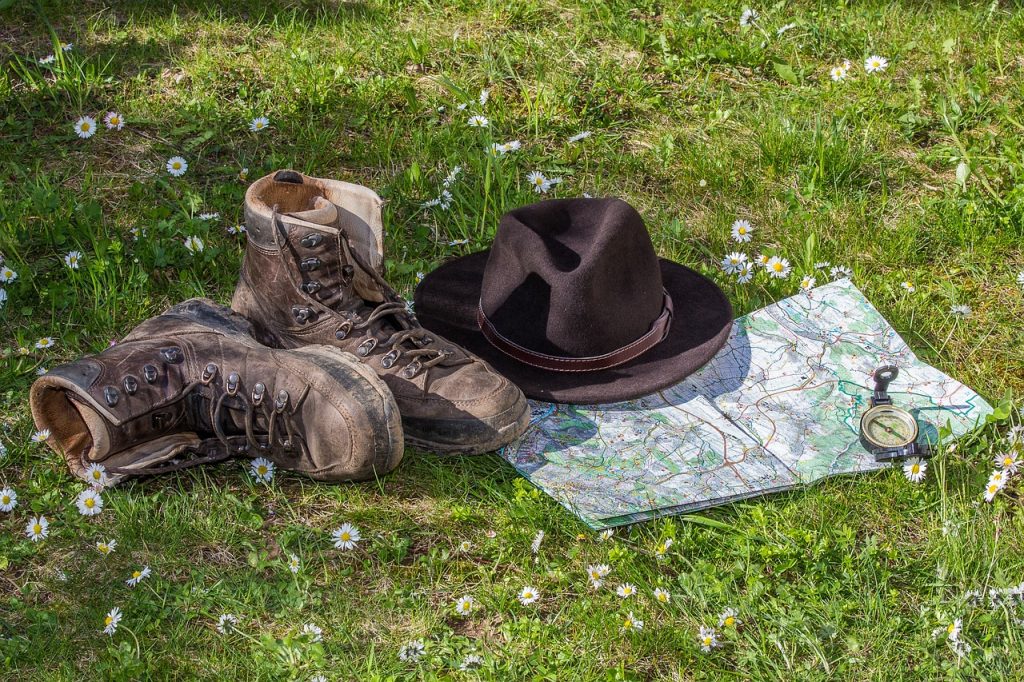
Related Links:


